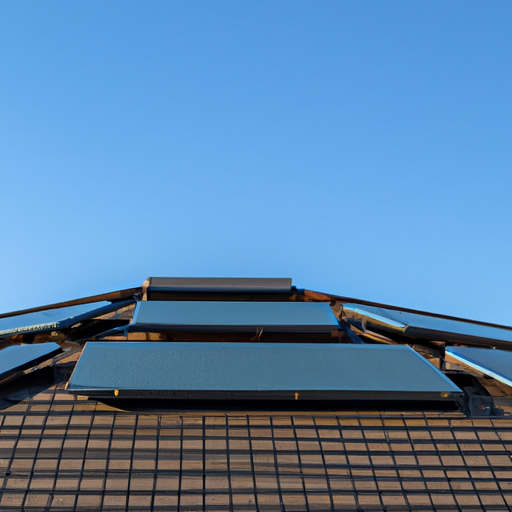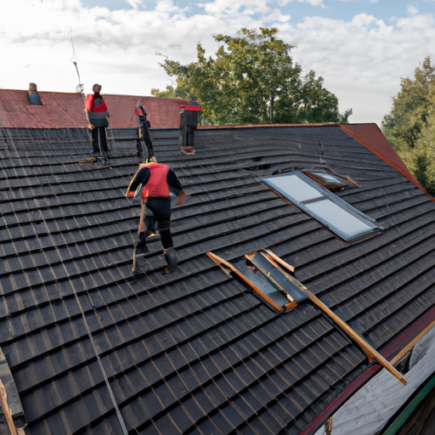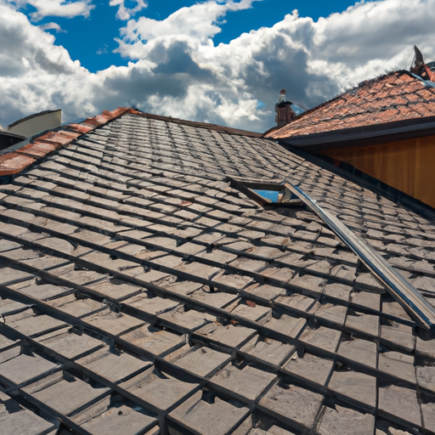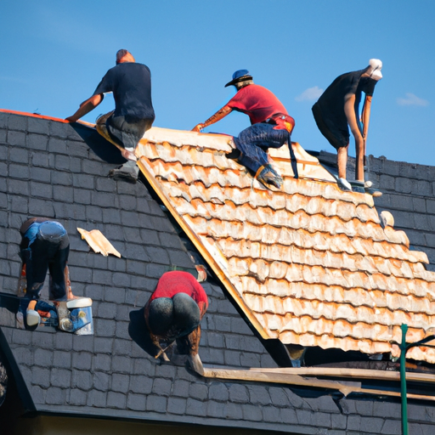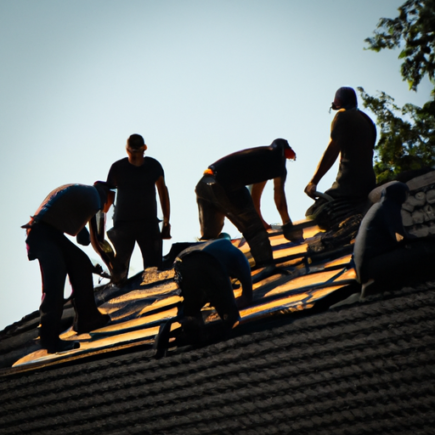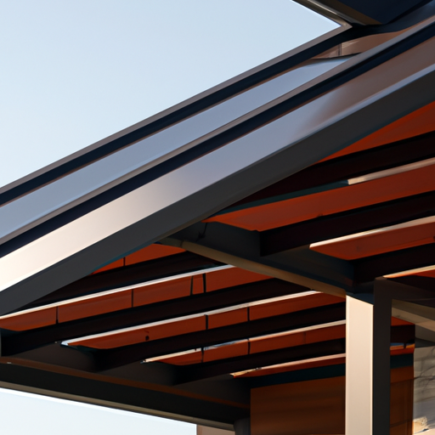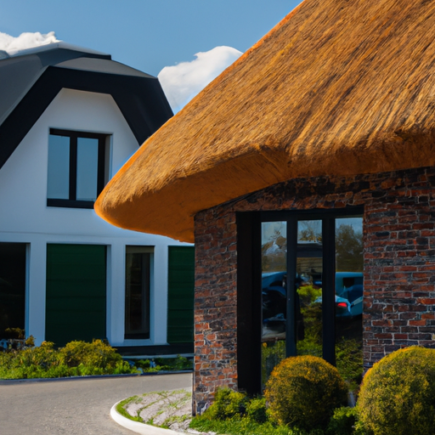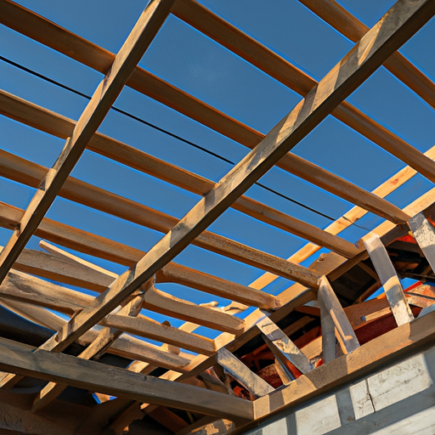The article „Introduction to Roof Construction: Key Considerations and Planning” provides an overview of the important factors to consider when undertaking a roof construction project. It emphasizes the significance of choosing the right materials based on factors such as climate and budget. The article also highlights the importance of proper design and layout to ensure functionality and aesthetic appeal. It emphasizes the need for comprehensive planning, obtaining permits, and working with reputable contractors. Additionally, the article emphasizes the importance of budgeting and prioritizing safety throughout the construction process. By following these considerations, readers can ensure a successful and long-lasting roof construction project.
A Comprehensive Guide to Roof Construction: Materials, Techniques, and Considerations
When it comes to constructing a roof, understanding the basics is essential. This comprehensive guide aims to provide an introduction to roof construction, covering the fundamental aspects that you need to know. It begins by discussing the importance of selecting appropriate materials, with options ranging from traditional choices like asphalt shingles to more sustainable options like metal roofing and green roofs. The guide also highlights the significance of understanding various construction techniques, such as roof framing systems, roof slope, ventilation systems, and insulation. By considering these key factors, you can make informed decisions that result in a durable, aesthetically pleasing, and sustainable roof for your home or building.
Top Factors to Consider in Roof Construction: A Comprehensive Overview
Choosing the right roofing material is crucial for durability, aesthetics, and energy efficiency. Factors to consider include climate, with different materials performing better in certain conditions. The slope of the roof also affects material selection, as some are better suited for steep pitches while others work on low-slope roofs. Cost is a significant factor, considering both upfront expenses and long-term maintenance. Lifespan and durability vary between materials, so it’s important to assess the value for investment. Aesthetics shouldn’t be overlooked, as the appearance of the roof impacts property curb appeal. Overall, considering climate, roof slope, cost, lifespan, durability, and aesthetics will help choose the right roofing material.
Innovative Roof Construction Methods: Exploring Modern Designs and Technologies
In recent years, roof construction has experienced significant advancements in both design and technology, resulting in more sustainable and efficient buildings. One of the key trends in roof construction is the use of eco-friendly materials, such as green roofs, which not only enhance the aesthetics but also promote environmental conservation. Another trend is the integration of solar panels, allowing buildings to generate renewable energy and reduce reliance on traditional sources. Architects are also exploring new and unique roof designs, moving away from traditional pitched roofs to more complex shapes that offer functional benefits. Additionally, lightweight and durable materials like metal alloys and composites are becoming popular choices, offering resistance against various weather conditions and reducing construction time and costs. Lastly, the incorporation of smart technologies into roof construction allows for remote monitoring and control, optimizing energy efficiency and creating a comfortable indoor environment. Overall, these trends in roof construction are revolutionizing the industry and shaping the roofs of the future.
The Ultimate Guide to Roof Construction: Everything You Need to Know
Roof construction is an important aspect of any building project, with a variety of types and materials to choose from. Pitched roofs, such as gable, hipped, and mansard roofs, are commonly used in residential homes due to their efficient water runoff and maintenance. Flat roofs are popular in commercial buildings and require regular maintenance to prevent water pooling. Asphalt shingles, metal roofing, clay or concrete tiles, and wood shingles are all options for roofing materials, each with its own set of advantages and disadvantages. Green roofing has also become popular for its environmental benefits. The choice of roof construction type and material depends on factors such as location, climate, budget, and desired aesthetic, and consulting with a professional is recommended for the best option for your specific project.
A Comprehensive Guide to Roof Construction: Materials, Techniques, and Sustainability
When it comes to roof construction, choosing the right materials is crucial. This comprehensive guide provides an overview of different roofing materials and their benefits, helping you make an informed decision for your construction project. Options such as asphalt shingles offer affordability and durability, while metal roofing provides longevity and energy efficiency. For a more natural look, wood shingles or shakes are a popular choice, although they require regular maintenance. Green roofs offer an eco-friendly option with added insulation and environmental benefits. Concrete or clay tiles are ideal for extreme weather conditions, but structural support must be considered. Consulting with a professional roofing contractor can help navigate through these choices and ensure a successful project.
Exploring Different Roofing Systems: From Traditional to Modern Techniques
Traditional roofing systems have stood the test of time and are popular for their durability, longevity, and aesthetic appeal. Pitched roofs, made from slate, clay tiles, or thatch, are known for their exceptional durability and can last for several decades. Flat roofs, commonly found on commercial buildings, offer a modern look and can be constructed using advanced materials such as rubber or thermoplastic membranes. Traditional roofing systems also enhance the overall look of a property and blend seamlessly with the surrounding environment and architecture. While modern roofing techniques offer innovations such as solar shingles, traditional roofing systems continue to be a popular choice for homeowners who appreciate their timeless charm and lasting qualities.
The Ultimate Guide to Roof Construction Techniques and Materials
The article titled „Introduction to Roof Construction Techniques and Materials: A Comprehensive Guide” provides a detailed overview of the various aspects involved in roof construction. It emphasizes the importance of understanding different roof styles, such as flat roofs, gable roofs, hip roofs, and mansard roofs, as well as selecting the right roofing materials like asphalt shingles, metal roofing, slate, clay tiles, and wood shakes. The article also highlights the significance of considering factors like weather resistance, maintenance requirements, and energy efficiency when choosing roofing materials. Furthermore, it discusses the importance of safety measures and regulations in roof construction, as well as the rising popularity of green and sustainable roof construction techniques. The article concludes by highlighting the need for making well-informed decisions that align with project goals and promises further exploration of each aspect of roof construction techniques and materials in subsequent chapters. In the second article, titled „Exploring Different Types of Roofing Materials: Pros and Cons,” the focus is on providing an in-depth analysis of various roofing materials, including asphalt shingles, metal roofing, clay tiles, slate, and wood shakes. The pros and cons of each material are discussed, taking into account factors such as climate, budget, and aesthetic preferences, to assist readers in making informed decisions for their roof construction projects.
Advancements in Roof Construction: Innovations, Sustainability, and Future Trends
When it comes to roof construction, there have been significant advancements in recent years that have revolutionized the industry. These innovations not only improve the durability and performance of roofs but also contribute to sustainability efforts. In this article, we will explore some of the latest innovations in roof construction and their potential impact on the future of the industry.
One of the most exciting developments in roof construction is the introduction of green roofs. Green roofs, also known as living roofs, involve the installation of vegetation on the roof surface. Not only do they provide an aesthetically pleasing appearance, but they also offer several practical benefits. Green roofs can help regulate indoor temperature, reduce energy consumption, and manage stormwater runoff. Additionally, they contribute to improving air quality and provide habitats for wildlife in urban areas. With a growing focus on sustainability, green roofs have gained popularity and are expected to become even more prevalent in the coming years.
Another notable innovation in roof construction is the use of solar panels. Solar panels are becoming increasingly common on rooftops as homeowners and businesses recognize the importance of renewable energy sources. Integrating solar panels into roofs not only generates electricity but also helps reduce dependence on traditional energy grids. This technology has steadily improved over the years, with panels becoming more affordable, efficient, and aesthetically pleasing. As the demand for clean energy continues to rise, the integration of solar panels into roof design is expected to become a standard practice.
Advancements in materials have also played a significant role in improving roof construction. The development of more durable and weather-resistant materials has increased the lifespan of roofs. For example, the use of synthetic roofing materials such as rubber and plastic composites has become more prevalent. These materials offer superior resistance to harsh weather conditions, including high winds and heavy rains. Additionally, they are lightweight, making installation easier and reducing the load on the structure. As technology continues to advance, we can expect to see further innovation in roofing materials, leading to even more durable and efficient roofs.
In conclusion, the world of roof construction is constantly evolving with new innovations and trends. The incorporation of green roofs, solar panels, and advanced materials has revolutionized the industry, making roofs more sustainable, energy-efficient, and durable. As we move towards a greener future, it is essential for architects, contractors, and homeowners to stay up-to-date with the latest advancements in roof construction. By embracing these innovations, we can create buildings that are not only functional but also environmentally friendly.
An Introduction to Roof Construction: A Comprehensive Guide
Understanding different types of roof designs is essential when it comes to roof construction. The design of a roof not only plays a crucial role in the overall aesthetics of a building but also determines its functionality and durability. In this comprehensive guide, we explore various types of roof designs and their features, including the gable roof, hip roof, mansard roof, flat roof, gambrel roof, and shed roof. By understanding these different designs, readers can make informed decisions during the roof construction process. It is important to consider factors such as climate, architectural style, and desired functionality when choosing the most suitable roof design for a building. Consulting professionals and adhering to local building codes is also crucial for a safe and successful roof construction project.


